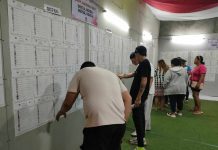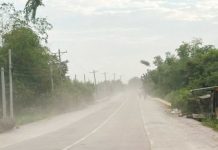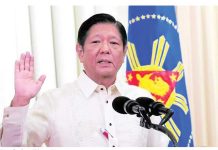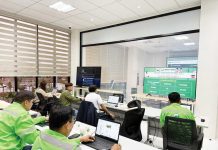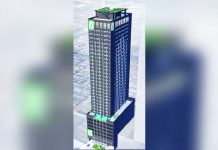MANILA – Which is best for Boracay Island – farming or tourism?
The government should observe the “suitable land use rule” in deciding what to do with Boracay after its rehabilitation, according to Senate President Pro Tempore Ralph Recto.
“Whether it is urban or rural, upland or coastal, the rule we follow in land use is suitability – the optimal utilization that will yield the most income, the most jobs, the greatest economic value per square meter with the least social and environmental cost,” Recto said.
On Monday, President Rodrigo Duterte said he would declare Boracay a land reform area and distribute it to farmers.
“There are lands best for farming, for housing, for tourism, for industry, for protection as national parks,” said Recto.
He hoped that the 1,078-hectare Boracay would remains an “income-earning rest-and-recreation area.”
The country could grow food better in the country’s other 9.7-million hectare agricultural land, he said.
Stressing the suitable land use rule, Recto said, “One does not grow pechay that sells for P100 a kilo on a P200,000-per-square-meter block of land in Makati.”
“One can either gather tuba or nuts for copra in a one hectare of beachfront coconut land and earn P100,000 a year – which would hardly allow a family to scrape by – or build on that land an environmentally-compliant resort that can employ hundreds of people and raise millions in taxes for the government’s social programs,” said Recto.
There are some 500 tourism-related businesses in Boracay. Their combined annual revenue last year was estimated to have reached P56 billion.
Data from the Boracay Foundation show there are over 19,000 people working in the formal sector – including hotels, resorts, restaurants, dive shops, souvenir shops, tour activity centers, and transport providers.
Another 17,000 work in the informal sector as masseurs, tattoo artists, and vendors by the beach.
Meanwhile, Tourism regional director Helen Catalbas said although Boracay Island is a major industry contributor, its closure would hardly make a dent to the entire tourism sector.
She said the temporary six-month closure of the island for rehabilitation would have a positive effect to other Western Visayan provinces which also unique attractions.
“Aklan’s tourism would suffer because it is where Boracay is located but the rest of the region would be affected positively,” said Catalbas.
Catalbas said part of Boracay’s tourism market would go to other provinces as long as they could offer similar experience.
Region 6 registered 5.8 million in tourist arrivals in 2017, higher than the year’s target of 5.5 million.
For 2018, the target is at least 5.8 million and in 2019, the region’s goal is to attract 6.1 million tourists.
Catalbas said other provinces in Western Visayas need to increase their tourist arrivals by at least 1.2 million this year to compensate for the possible losses to be brought by the six-month closure of Boracay starting April 26. (With a report from the Philippine News Agency/PN)

